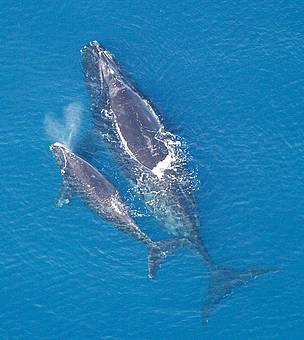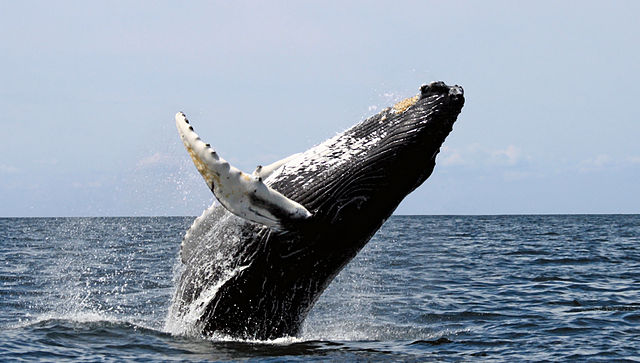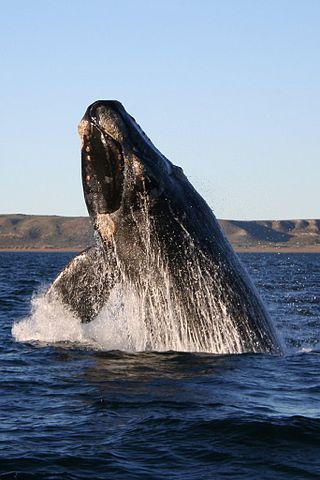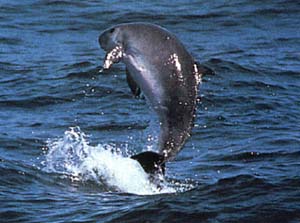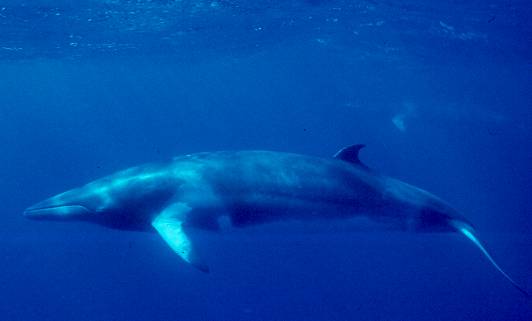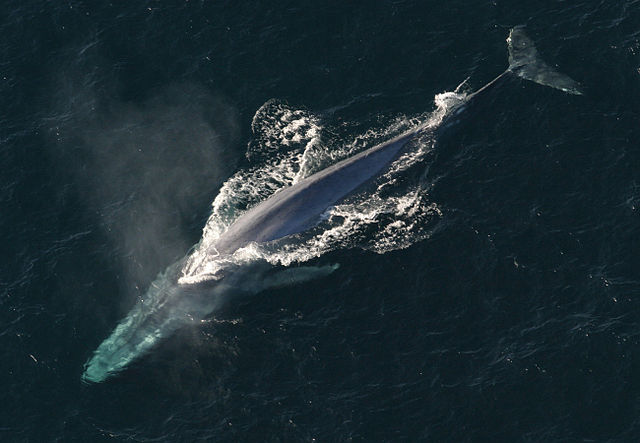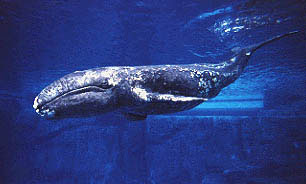Species Profile: The North Atlantic Right Whale
The North Atlantic Right Whale is the most endangered species among whales today.
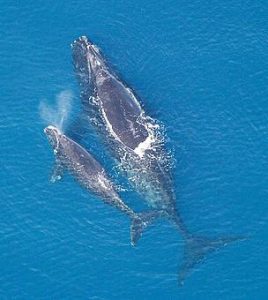
The North Atlantic Right Whale is one of three baleen right whale species in the Eubalaena genus. They are among the biggest whales on earth.
Their docile and easy to hunt nature made them a target for ruthless hunting in past decades. Today, they are easily the most endangered whales in the world.
These whales are easy to identify with the callosities on their heads (caused by whale lice infestation), and a broad back lacking any dorsal fin. Also, their mouths arcs deeply from just below the eye. The North Atlantic right whale has a very dark gray/black body and some individuals have white patches on the belly.
About forty percent of their body weight is blubber: a very low density substance. Consequently, unlike many other species of whale that sink to the ocean floor when dead, right whales float.
Though hunting of this whale is now prohibited, they still face several threats including ship collisions and entanglement in fishing nets and gear.
The North Atlantic Right Whale is listed as Threatened by the IUCN.
1) Scientific Name
Eubalaena Glacialis
2) Scientific Classification:
- Kingdom: Animalia
- Phylum: Chordata
- Class: Mammalia
- Order: Artiodactyla
- Family: Balaenidae
- Genus: Eubalaena
- Species: Eubalaena Glacialis
3) Life Expectancy
Though there are no exact figures on life expectancy, experts estimate that they can live from between 50 to over 100 years .
4) Average/Maximum Length
The Adult North Atlantic right whale averages from 13 to 16 meters (43 to 52 feet) in length. The largest measured individual was 18.5 meters (61 feet) long. Females are generally larger than males.
5) Average/ Maximum Weight
They weigh approximately 40,000 to 70,000 kg (44 to 77 short tons) with the largest one weighing 106,000 kg (234,000 lbs.)
6) Maximum Swimming Speed
These whales are slow swimmers.
7) Interaction With/Danger To Humans
There is no record of these whales harming humans. As a matter of fact, its humans that have severely hunted and decimated the population of these creatures.
They got their common name “right whale” from the observation of commercial whalers. These whale hunters noticed a number of things that made this whale the “right” one to hunt:
- They have extremely high blubber content, the highest among whales. This blubber is very valuable and commercially useful for so many products.
- They are docile, slow swimming and easy to kill.
- When dead, right whales float. So, it’s easy to get to the body and quickly harvest everything the whalers need from it.
8) Reproduction Details
They mature sexually at about nine to 10 years: that’s when females will have their first calf.
Gestation period is approximately 1 year and the calves are weaned toward the end of their first year. Breeding season varies, the population around Georgia and northern Florida have theirs from December through March.
Calves are about 4.0 to 4.6 meters (13 to 15 feet) long at birth and weigh around 3,000 pounds (1,400 kg). They are very playful and curious about their surroundings.
During breeding season, all vessels 19.8 meters (65 feet) long and above must travel at 10 knots or less within the whale habitat to reduce the risk of ship strike.
9) Diet/Hunting Pattern Of The North Atlantic Right Whale
Right whales as a group feed mainly on copepods and other small invertebrates including krill, and larval barnacles. They swim slowly with their mouths open through concentrations of prey just below the water surface.
They are commonly sighted hunting the same prey as other large species like the Sei whales, Minke whales, and Basking sharks. However, they get along with all these other animals and no fights have been observed so far.
The North Atlantic right whale feeds beside other whales and even basking sharks without any conflicts.
10) Alternative Names
- Black Right Whale
- Northern Right Whale
11) Population And Conservation Status
As mentioned before, the “right” whale is so named because it was the perfect target for whalers. Since it continued to float after death, they could easily and quickly collect the blubber without even having to take it onboard ship.
In addition, it’s slow swimming speed and tendency to feed closer to shore made it fair game to even the most basic hunters with crude hand-held hunting gear.
At present, there are two populations of these whales; the western North Atlantic and the eastern North Atlantic groups.
As at 2011, the western group numbered at least 465 individuals and more recent checks show a slight population growth. However, the groups still remains critically endangered.
The eastern North Atlantic group is worse off. This group is nearly extinct, probably numbering just under 20 individuals.
Because of these extremely poor numbers, the North Atlantic right whale maintains its place as the most endangered whale in the world. As a result, they are protected under a number of regulations. These include:
- the U.S. Endangered Species Act and Marine Mammal Protection Act and
- Canada’s Species at Risk Act.
Today, though they are no longer hunted directly, here are the major threats they face:
Ship Strikes
Vessel strike alone is the single greatest threats to this species. Their breeding area is also a very popular shipping route increasing the risk of injury and death.
Fishing Gear Entanglement
Fixed fishing gear like bottom-set groundfish gillnets, cod traps, and lobster pots have led to the direct death of many of these and other whales.
Marine Noise
These whales are very sensitive to low-frequency ship noise and there is evidence that such noise causes chronic physiological stress in North Atlantic right whales. Of particular concern is a US Naval training range near the whales’ calving grounds.
Though leading environmental groups tried to halt the plans for the undersea naval sonar facility, a federal court granted the navy permission to proceed.
The IUCN lists the North Atlantic Right Whale as Threatened.
Within a 16-year period (1970 – 2006) human activities alone accounted for 48 percent of 73 recorded North Atlantic right whale deaths.
12) Distribution and Habitat
As implied by their name, this species lives in the Atlantic Ocean. Specifically, along the Northeast and Southeast coast of the USA and parts of Canada.

